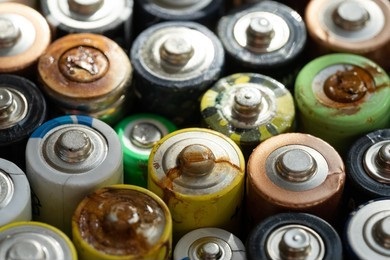
Waste is diverse, comefrom various sources, and is potentially hazardous. Waste may contain metals, especially heavy metals such as copper (Cu), lead (Pb), zinc (Zn), iron (Fe), cobalt (C0o), nickel (Ni), manganese (Mn), cadmium (Cd), mercury (Hg), molybdenum (Mo), arsenic (As), etc., most of which are mutagens and disease-causing substances.
These heavy metals generally do not decompose naturally but usually accumulate in living organisms, and the heavy metals in waste may re-enter human and animal bodies through certain plant products, endangering the health of human and animal life.
The sound treatment of waste requires accurate analysis of the composition and content of metal elements (especially heavy metals) in waste. Lifeasible has a proven platform and a wide range of tools to analyze the content and composition of metals in waste.
| No. | Name of Element | No. | Name of Element | No. | Name of Element |
| 1 | Copper | 24 | Europium | 47 | Mercury |
| 2 | Lead | 25 | Gallium | 48 | Molybdenum |
| 3 | Zinc | 26 | Gadolinium | 49 | Arsenic |
| 4 | Iron | 27 | Hafnium | 50 | Vanadium |
| 5 | Cobalt | 28 | Holmium | 51 | Chromium |
| 6 | Nickel | 29 | Indium | 52 | Antimony |
| 7 | Manganese | 30 | Iridium | 53 | Bismuth |
| 8 | Cadmium | 31 | Potassium | 54 | Selenium |
| 9 | Rubidium | 32 | Lanthanum | 55 | Tellurium |
| 10 | Rhenium | 33 | Lithium | 56 | Tin |
| 11 | Rhodium | 34 | Lutetium | 57 | Germanium |
| 12 | Ruthenium | 35 | Magnesium | 58 | Titanium |
| 13 | Scandium | 36 | Sodium | 59 | Silver |
| 14 | Samarium | 37 | Niobium | 60 | Aluminum |
| 15 | Strontium | 38 | Neodymium | 61 | Gold |
| 16 | Terbium | 39 | Phosphorus | 62 | Boron |
| 17 | Thorium | 40 | Palladium | 63 | Barium |
| 18 | Thulium | 41 | Praseodymium | 64 | Beryllium |
| 19 | Uranium | 42 | Platinum | 65 | Calcium |
| 20 | Vanadium | 43 | Dysprosium | 66 | Cerium |
| 21 | tungsten | 44 | Erbium | 67 | Chromium |
| 22 | Yttrium | 45 | Thallium | 68 | Cesium |
| 23 | Ytterbium | 46 | Zirconium | … | … |
| Methods | Features |
| ICP-MS (inductively coupled plasma mass spectrometry) | This method can be used for the quantitative and internal standard determination of metal elements in samples and has the advantages of low detection limits, ideal results, high sensitivity, good selectivity, low spectral interference, and simple operation. |
| ICP-AES (inductively coupled plasma-atomic emission spectrometry) | This method can detect multiple spectral lines with relatively low detection limits in the atomic spectrum. The multi-channel ones can detect multiple atoms and ions simultaneously, which is more convenient and has good reproducibility. |
| GFAAS (graphite furnace atomic absorption spectrometry) | This method has high atomization efficiency and high absolute sensitivity and can be used to determine low content and trace components. |
| FLAAS (flame atomic absorption spectrometry) | This method has high sensitivity, strong anti-interference ability, and easy operation. |
| AFS (atomic fluorescence spectrometry) | This method is highly sensitive and inexpensive to determine specific elements (mercury, arsenic, cadmium, etc.). |
Lifeasible uses various techniques to accurately determine the content of various metal elements in waste, which has important practical implications for the choice of solid waste disposal methods and the remediation of the soil environment. For more information or to begin a testing program, please contact our staff directly to work with you 24/7.
Lifeasible has established a one-stop service platform for plants. In addition to obtaining customized solutions for plant genetic engineering, customers can also conduct follow-up analysis and research on plants through our analysis platform. The analytical services we provide include but are not limited to the following:
Get Latest Lifeasible News and Updates Directly to Your Inbox
Adaptive Evolutionary Mechanism of Plants
February 28, 2025
Unraveling Cotton Development: Insights from Multi-Omics Studies
February 27, 2025